What Is the Triple Bottom Line?
All businesses need to make money—but Triple Bottom Line companies know they can do so much more. In recent years, this approach has reshaped how some of the world’s top brands make decisions, balancing profitability with a positive impact on society and the environment.
Traditionally, business leaders focused solely on their financial bottom line: maximizing profit. But today, more leaders are thinking sustainably. The Triple Bottom Line expands this classic framework to include two essential performance areas alongside Profit: social impact (People) and environmental responsibility (Planet). Together, these three “P’s”—People, Planet, and Profit—redefine success, measuring it not just by financial gain but by the value a company creates for its employees, communities, and the environment. By integrating the Triple Bottom Line, businesses can thrive economically while fostering a positive legacy that benefits society and strengthens their reputation in an increasingly conscientious market.
In today’s marketplace, consumers are drawn to businesses that show a genuine commitment to making a difference. The Triple Bottom Line approach isn’t just good for the world—it’s a powerful competitive edge, attracting customers who value responsibility and integrity in the brands they support.
How NCSBC Defines Sustainable Business
At the North Carolina Sustainable Business Council (NCSBC), we believe that sustainable business is about making a difference. For us, a truly sustainable business doesn’t just seek profits; it builds value by investing in people and protecting our planet. Here’s what the Triple Bottom Line looks like in practice:
People
People considers employees, the labor involved in a corporation’s work, and the wider community where a business operates. At its core, this “P” asks: How much does a company benefit society?
Triple bottom line companies prioritize fair wages, humane working conditions, and community engagement, recognizing that positive relationships are essential to their mission and long-term success. These companies go beyond compliance to ensure that workers, suppliers, and community members feel valued and respected. They actively “give back” through initiatives that support societal well-being, strengthen local economies, and foster sustainable growth, allowing these businesses to serve the broader community in ways that also support their own success.
Example: 3M partners with United Way to fund STEM education across the world. This initiative is an example of “enlightened self-interest”—acting to further the interests of others, ultimately, to serve one’s own self-interest. The community benefits, and 3M provides itself a well-educated source of scientists and innovators for generations to come.
Planet
“Planet” addresses a business’s responsibility to minimize its ecological footprint. This “P” asks: How can a company reduce its environmental impact?
Public concern continues to grow over climate change, with a November 2023 Bain study of 23,000 consumers demonstrating 64% of consumers express high levels of concern about sustainability, with many willing to pay more for environmentally responsible products. As businesses face increasing pressure to act responsibly, triple bottom line companies can gain a competitive advantage by proactively adopting sustainable practices. These companies commit to conserving resources, reducing waste, and minimizing pollution—often through investments in renewable energy, more efficient supply chains, and careful resource management—to meet rising public expectations for corporate responsibility.
Example: Apple has invested heavily in environmental sustainability, making its U.S. data centers LEED certified and powering 93% of its operations with renewable energy as of 2016. Apple’s leadership in environmental initiatives has inspired other tech giants, like Google and Facebook, to adopt more sustainable energy sources.
Profit
While every business pursues financial profitability, triple bottom line businesses see it as one part of a business plan. “Profit” represents a business’s financial health, but for triple bottom line companies, it’s about more than just earnings—it’s about creating sustainable value. This “P” fundamentally asks: How can profitability drive positive change for people and the planet, while ensuring long-term business success?
Triple bottom line companies recognize that profitability can coexist with social and environmental goals, and they see financial gain as an outcome of responsible practices that benefit all stakeholders. For TBL companies, profit serves as a foundation that supports social and environmental innovation, creating a resilient business model that adapts to evolving market demands while driving positive impact.
Example: Swedish furniture giant IKEA reported $37.6 billion in sales in 2016, the same year it transformed waste recycling into a profitable venture by repurposing materials into new products. This shift not only saved the company over $1 million annually but also brought it closer to its “zero waste to landfill” goal. According to IKEA’s head of sustainability, Joanna Yarrow, “We don’t do this because we’re tree huggers; we do this because it’s very cost-effective.”
Why the Triple Bottom Line?
In a world where customers, employees, and communities expect more from businesses, the Triple Bottom Line approach offers real advantages:
Capturing Modern Consumer Interest: Today’s consumers prefer brands that demonstrate authentic responsibility. A commitment to TBL builds trust and loyalty, creating a strong connection with customers who align with these values.
Building Resilience: Sustainable practices make companies more adaptable and prepared for regulatory or market shifts.
Driving Profitable Growth: Sustainable choices reduce costs, improve efficiency, and attract investors, proving that positive impact and financial success go hand-in-hand.
What’s Next?
Ready to make a difference? Explore resources, join our community, and see how the Triple Bottom Line can create value for you and your business:








